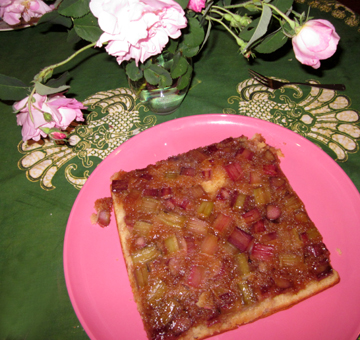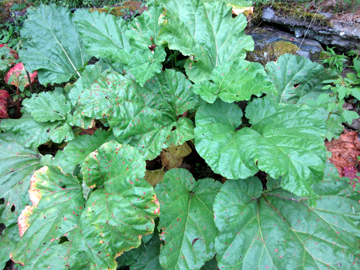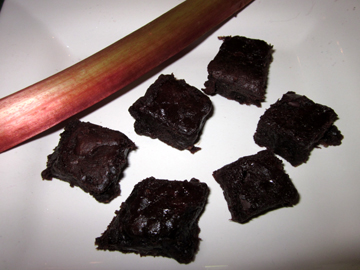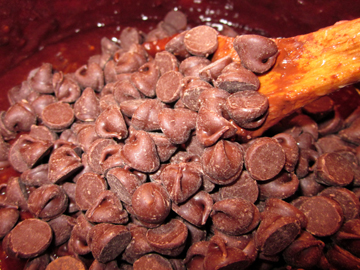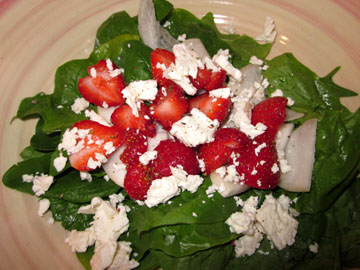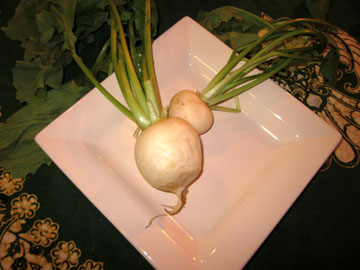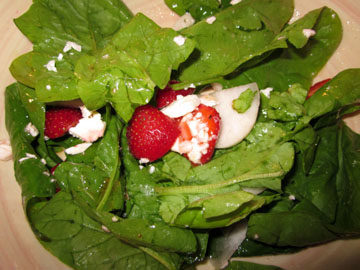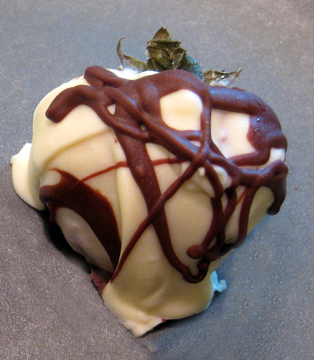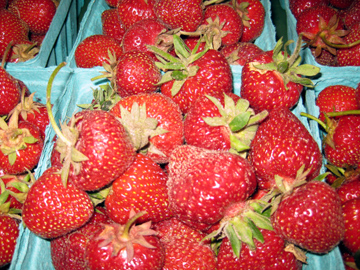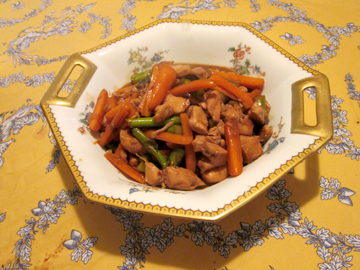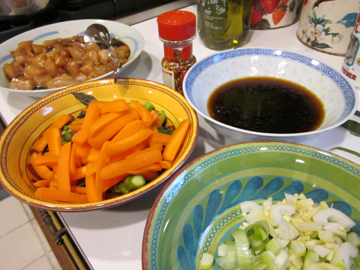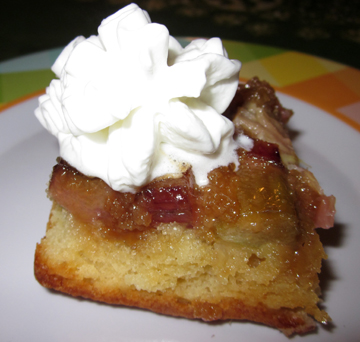
Let me explain.
After various peregrinations I am finally home in Hawley, Massachusetts, contemplating the gorgeous greenery everywhere and the abundant rhubarb in my yard.
(It’s even more abundant in the yard of my generous next-door neighbor Dennis!)
Seeing its lush (if poisonous) green leaves and strong red stalks has inspired me to try yet another upside-down cake.
You may recall that the previous recipe from Sue Haas featured marshmallows. This ingredient surprised some of the commenters, particularly the eloquent Flaneur.
It’s amazing how different two rhubarb cakes can be! Of course, I like them both. (I seldom dislike cake, for my sins.)
Sue’s Michigan upside-down cake is not too sweet and not too goopy; the marshmallows hold it together and give it a slight vanilla flavor.
This version is definitely sweeter and richer. On the other hand, it’s also a little more rhubarby. The marshmallows tend to tame the rhubarb in the other recipe.
Which should you make? BOTH, of course………
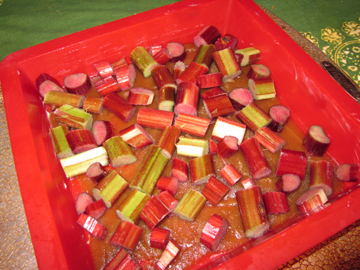
Ingredients:
for the topping:
1/4 cup (1/2 stick) sweet butter
3/4 cup brown sugar, firmly packed
2 cups rhubarb (1/2-inch chunks)
for the cake:
1/2 cup (1 stick) butter, at room temperature
1 cup sugar
2 eggs
1/4 teaspoon salt
1 tablespoon baking powder
1-3/4 cups flour
1/2 cup milk
2 teaspoons vanilla
Instructions:
Preheat the oven to 350 degrees.
First make the topping (which goes on the bottom!).
Melt the butter in a saucepan. Stir in the brown sugar and cook, stirring, until it melts and bubbles—3 to 4 minutes.
Transfer the brown-sugar mixture into a 9-inch-square cake pan. Spread it through the bottom of the pan. Arrange the rhubarb pieces on top as artistically as you can. (Mine weren’t very artistic.)
For the cake cream together the butter and sugar. Beat in the eggs, 1 at a time. Add the baking powder and salt. Stir in the flour alternately with the milk, beginning and ending with the flour. Stir in the vanilla, and pour the batter over the rhubarb mixture.
Bake the cake until a toothpick inserted into the center (but not too far down; don’t hit the rhubarb!) comes out clean, about 40 minutes. If the cake is brown but not done before this happens, decrease the oven temperature and continue baking.
Allow the cake to cool for 5 to 10 minutes. Loosen the edges with a knife, and invert the cake onto a serving plate held over the skillet. Turn upside-down. Remove pan.
Serve alone or with whipped cream. Serves 9.
I should think you could absolutely bake this pan in a 10-inch iron skillet (heating the butter and brown sugar in it first, and then piling on the other ingredients). I couldn’t find my skillet, however, so I used a square pan and can only report on those results.
